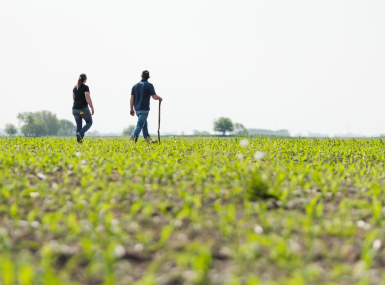States submit Rural Health Transformation Program funding applications
Author

Blaire Bryant

Naomi Freel
Upcoming Events
Related News

Key Takeaways
NOVEMBER 14, 2025 UPDATE: On November 5, the Centers for Medicare & Medicaid Services (CMS) announced that all 50 states submitted applications for the Rural Health Transformation (RHT) Program. The RHT Program, which was created as a part of the reconciliation package, will invest $50 billion over five years (FY 2026–2030) to strengthen rural health systems by improving access, workforce capacity, technology and innovative models of care. NACo continues to track information on state applications and their impacts on county governments and residents. Click here to view each state's application.
SEPTEMBER 15, 2025 UPDATE: The Centers for Medicare & Medicaid Services (CMS) has released the Rural Health Transformation (RHT) Program Notice of Funding Opportunity (NOFO), opening the application period for states. Applications are due by November 5, 2025. The RHT Program will invest $50 billion over five years (FY 2026–2030) to strengthen rural health systems by improving access, workforce capacity, technology and innovative models of care. To support applicants, CMS will host informational webinars on September 19 and September 25 from 3:00–4:30 p.m. ET. Learn more here.
On September 2, the Centers for Medicare & Medicaid Services (CMS) released additional details on the Rural Health Transformation (RHT) Program, overviewing program goals, requirements and timelines. The RHT Program was established by the One Big Beautiful Bill Act (OBBBA) (Section 71401 of P.L. 119-21) to strengthen health care in rural America. Administered by the CMS, the RHT program empowers states to improve healthcare access, quality and outcomes by transforming rural health care delivery systems.
Rural Health Transformation Program goals
The RHT Program is designed to strengthen rural communities through five broad goals: improving health by addressing root causes of disease; ensuring sustainable access through coordination and stronger networks; expanding rural workforce development; advancing innovative care models; and driving technology innovation.
Program funding and uses
The RHT program will provide $50 billion over five fiscal years (FY 2026–2030), with $10 billion available each year. Funding will be distributed to states through cooperative agreements:
- 50% distributed equally across approved states
- 50% allocated by CMS based on factors such as rural population and health facility needs
Eligible uses of funds include (states must use funds for at least three):
- Evidence-based interventions for prevention and chronic disease management
- Payments to providers for health care services
- Consumer-facing, technology-driven health solutions
- Training and technical assistance for adopting advanced technologies (e.g. artificial intelligence (AI), robotics and remote monitoring)
- Recruiting and retaining clinical workforce talent with 5-year rural service commitments
- Enhancing IT capacity, efficiency and cybersecurity in rural hospitals
- Supporting opioid, substance use disorder and mental health treatment services
- Developing innovative care and payment models
- Other Administrator-approved uses that promote sustainable rural access
See the full list of eligible uses
Timeline
While only states are directly eligible to apply for RHT funding, counties can expect to be closely involved as local partners in program implementation. The application process will open with the release of a Notice of Funding Opportunity (NOFO), which is expected in mid-September 2025, followed by an introductory webinar in late September. Applications will likely close in early November, with award announcements by December 31, 2025.
Importance to counties
The RHTP offers counties an important opportunity to strengthen local health care systems, particularly in areas where hospitals face financial strain or workforce shortages. As states and CMS will have broad discretion over how funds are allocated and what qualifies as “rural,” counties will need to be proactive in shaping state transformation plans.
Counties should prepare now by coordinating with state health officials; identifying local health system needs; and exploring opportunities to support workforce, technology and innovative care initiatives when funds are distributed. Early engagement and planning can help ensure that county priorities—such as maintaining hospital operations, expanding behavioral health services, upgrading technology and workforce recruitment—are included in funding proposals.
Resource
Federal Reforms to Medicaid Financing: What Counties Should Know

Related News

County Countdown – Dec. 15, 2025
Every other week, NACo's County Countdown reviews top federal policy advocacy items with an eye towards counties and the intergovernmental partnership.

U.S. Department of Agriculture unveils $700 million for regenerative agriculture
On December 10, U.S. Secretary of Agriculture Brooke Rollins announced the launch of a $700 million pilot program to support regenerative agriculture practices across the country.

White House and U.S. Department of Agriculture announce $12 billion in aid to farmers
On December 8, President Trump and U.S. Secretary of Agriculture Brooke Rollins announced a $12 billion farm aid package to help farmers manage market disruptions and rising production costs.